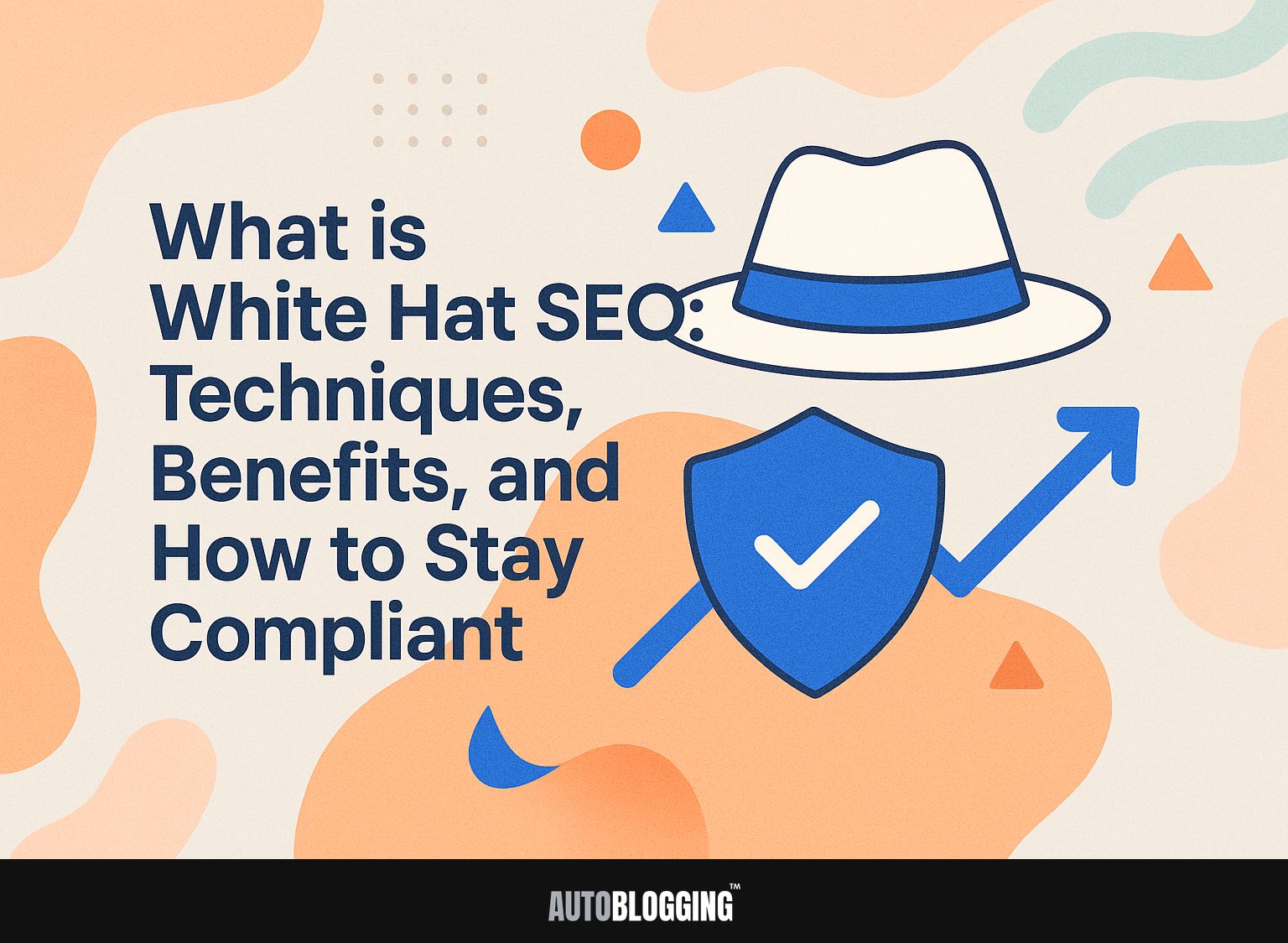
In search engine optimization, knowing white hat SEO is important for creating a long-lasting online presence. Unlike black hat SEO, which often uses questionable methods, ethical practices, as recommended by experts like Sabrina Dougall and Caitlin Hathaway, follow Google’s rules. This article explains useful methods, the advantages of following top methods, and how to handle the challenges of ethical SEO to improve your website’s visibility responsibly.
Key Takeaways:
- White Hat SEO focuses on ethical, long-term strategies to improve search engine rankings without violating guidelines.
- The key techniques of White Hat SEO include keyword research, quality content creation, on-page optimization, link building, and user experience.
- The benefits of White Hat SEO include sustainable results, a positive brand reputation, and higher conversion rates. Following search engine rules involves knowing their guidelines, updating regularly, and checking results.
Contents
- Core Techniques of White Hat SEO
- Benefits of White Hat SEO
- How to Stay Compliant with White Hat SEO
- Common Misconceptions about White Hat SEO
- Challenges in Implementing White Hat SEO
- Frequently Asked Questions
- 1. What is White Hat SEO?
- 2. What are some techniques used in White Hat SEO?
- 3. What are the benefits of using White Hat SEO?
- 4. How can I stay compliant with White Hat SEO?
- 5. What are some potential consequences of using Black Hat SEO techniques?
- 6. Can I use a combination of White Hat and Black Hat SEO techniques?
1. Definition of White Hat SEO
White Hat SEO means using methods that follow search engine rules, leading to lasting growth and website trustworthiness. This approach includes ethical link building techniques such as guest blogging or outreach to relevant sites, aimed at earning quality backlinks rather than purchasing them.
Creating content means developing material that is helpful, engaging, and distinctive, engaging with users and fulfilling their needs.
For example, a company might create detailed guides or tutorials in their specific area, which can make users happier and lead them to share on social media. Improving title tags and meta descriptions, and ensuring the site functions well on mobile devices, can make the site easier for people to find and use.
2. Importance of Ethical SEO Practices
Using honest SEO techniques creates trust with site visitors and helps improve search engine rankings over time, which is important for keeping a website visible online.
For instance, companies like Patagonia and Buffer have thrived by embracing transparency in their SEO strategies. Patagonia publicly shares details about its supply chain, appealing to consumers who care about the environment, strengthening their loyalty to the brand and improving its visibility in search results.
Similarly, Buffer publishes its social media data and internal salary structures, building authenticity and attracting a dedicated audience. These brands show that being ethical builds trust and can also improve organic search rankings because search engines prefer websites with authentic, dependable content.
Core Techniques of White Hat SEO
Knowing key White Hat SEO methods can greatly improve your website’s visibility and make sure it complies with search engine rules. It’s crucial to also consider SEO accessibility, ensuring your site is inclusive and discoverable by everyone. For more insights, our article on navigating SEO accessibility provides essential guidance.
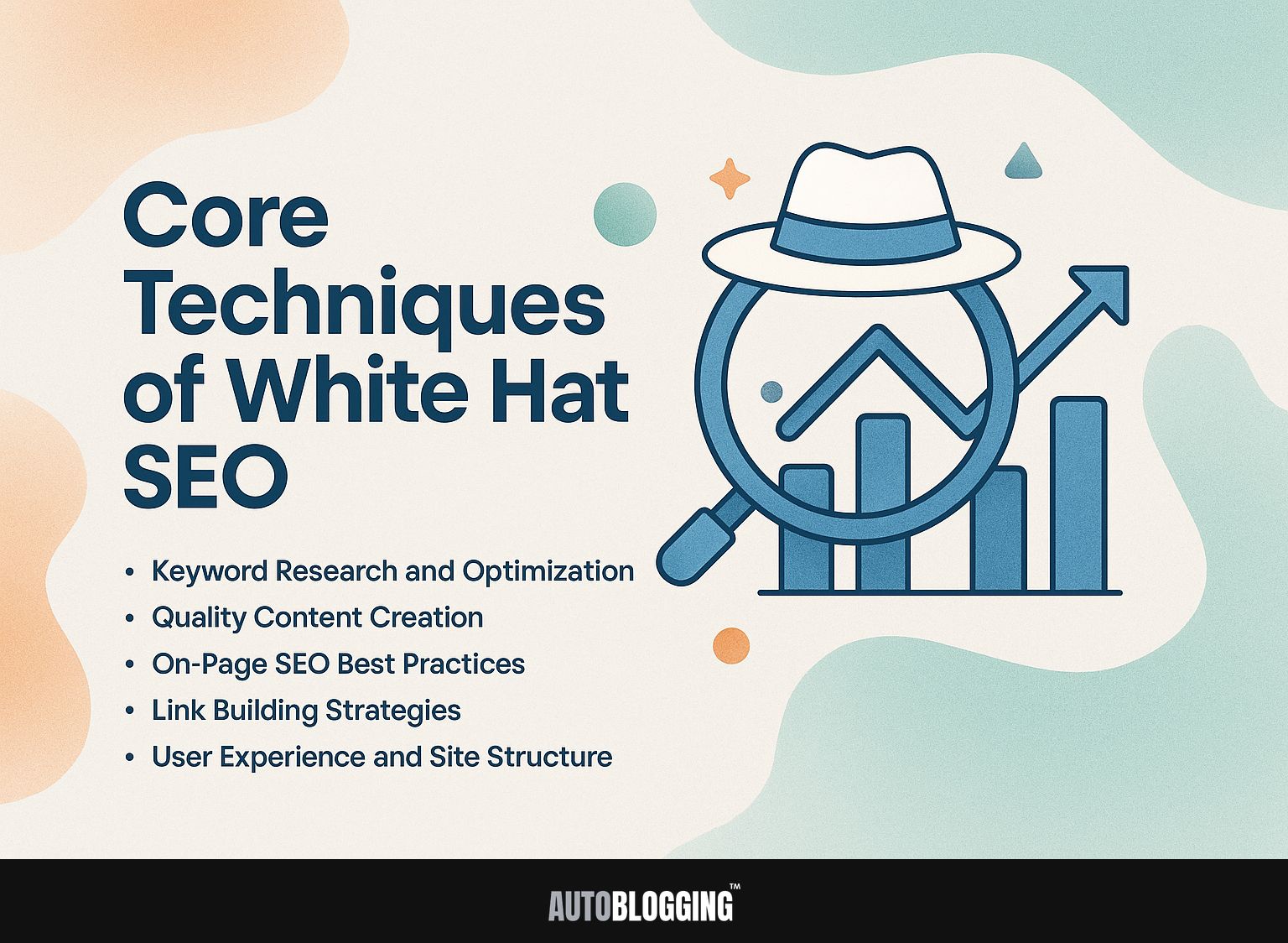
1. Keyword Research and Optimization
Good keyword research involves using tools like Ubersuggest (which is free) and SEMrush (which costs $119.95 per month) to find keywords that match what users are looking for.
- To do useful keyword research, begin by using keyword tools like Ubersuggest, which provides helpful information for free.
- Next, analyze potential keywords for search volume and competition using SEMrush, allowing you to prioritize which keywords to target based on their feasibility.
- Improve your content’s on-page elements-like headings, meta tags, and body text-focusing on your chosen keywords. For a detailed exploration of these practices, check out our insights on keyword research processes and best practices.
For instance, a small e-commerce site successfully increased its organic traffic by 150% in six months after targeting long-tail keywords that matched consumer queries.
2. Quality Content Creation
Creating top-notch content is important; using tools like Grammarly (free-$29.95/month) and Yoast SEO (free-$99/year) can help make sure your content is of high quality.
To improve your content’s quality, try these specific steps:
- Always aim for clarity and conciseness-short sentences often engage readers more effectively.
- Integrate multimedia elements, such as relevant images or videos, to break up text and keep users engaged.
- Make sure your content is easy to read on mobile phones since many people now use their phones to access the internet.
- Include clear calls to action that guide readers on the next steps to take, which can significantly improve user interaction.
3. On-Page SEO Best Practices
Increasing search visibility and site performance can be achieved by using structured data and better meta tags for on-page SEO.
- Begin by improving title tags and meta descriptions to include important keywords while still being engaging.
- Use headers (H1, H2, H3) to organize content clearly-this improves readability and helps search engines understand the structure of your content.
- Implementing structured data using Schema.org helps search engines understand your page context better, which can lead to rich snippets in search results.
- These methods together make your site easier to find, bring in more traffic from search engines, and increase interaction with visitors.
4. Link Building Strategies
Creating a strong plan for building links means getting quality backlinks by contacting others and writing guest posts to increase the site’s credibility.
- Start by identifying target websites relevant to your niche using platforms like Moz or Ahrefs. Focus on sites with strong domain authority and engaged audiences.
- Next, write helpful and informative content for guest posts that matches the interests of the host site’s readers. For instance, if you’re in the fitness industry, a guest post on a popular health blog discussing the latest workout trends could attract high-quality backlinks. To maximize the effectiveness of your outreach, you can explore various link building strategies that have been proven to yield significant benefits.
- Monitor your success using backlink analysis tools to adjust your strategy based on what works, ensuring continuous improvement in your link-building efforts.
5. User Experience and Site Structure
A well-organized website improves how users interact with it. Easy-to-use menus and quick page loading are important for search engine rankings.
To achieve this, simplify finding information on your site by designing a main menu that arranges your content understandably.
Use Google PageSpeed Insights to identify and resolve issues that make your site load slowly, like reducing image sizes or enabling browser caching.
Make sure your website design works well on phones and tablets; a layout that is easy to use on mobile devices can significantly increase interaction.
For examples, look at websites like Apple and Airbnb. They show clear menus and fast loading, giving users smooth experiences on any device.
Benefits of White Hat SEO
White Hat SEO doesn’t just increase traffic quickly; it helps your brand grow steadily and build a solid reputation over time. This approach aligns with the principles outlined in our analysis of link building strategies, which are essential for achieving sustainable growth.
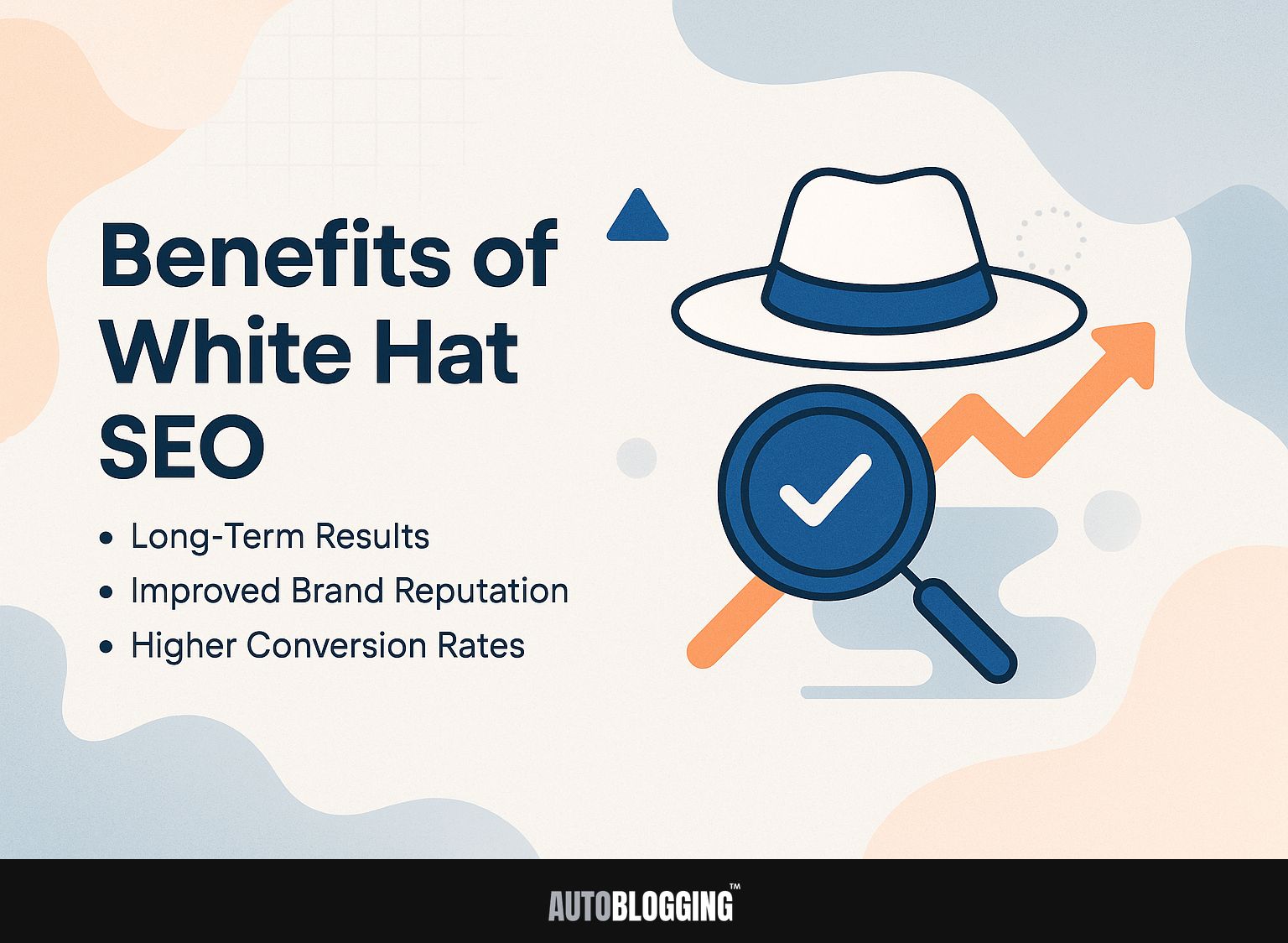
1. Long-Term Results
White Hat SEO strategies typically yield long-term results; sites using these methods can see a 50-100% increase in organic traffic within six months.
A case with an online retail store showed a 75% rise in visitors over a year by using ethical methods like producing good content, getting links the right way, and doing regular site reviews.
Tools like Moz for keyword tracking and Ahrefs for backlink analysis help monitor progress. Focusing on on-page SEO, like improving meta tags and site speed, greatly improves user experience and increases search engine rankings.
Businesses committed to these ethical practices often enjoy sustained, organic traffic, minimizing the risk of penalties.
2. Improved Brand Reputation
Maintaining a commitment to White Hat SEO directly correlates with improved brand reputation, as users increasingly prefer credible organizations.
For instance, companies like Moz and HubSpot have successfully built trust through transparent SEO practices, consistently disclosing their methodologies and avoiding manipulative tactics.
Moz is recognized for its educational resources and open talks about changes to algorithms, building a community that appreciates honesty.
HubSpot similarly invests in high-quality, well-researched content that prioritizes user experience over quick wins.
By using ethical SEO methods, both brands improve their credibility and build user loyalty, resulting in greater long-term success.
3. Higher Conversion Rates
Businesses that prioritize White Hat SEO often experience higher conversion rates, with a reported average increase of 15-20% due to improved user satisfaction. This improvement stems from ethical practices such as quality backlinking, relevant content creation, and transparent data collection.
For example, a Moz case study showed that a company grew its organic traffic by 30% in six months by concentrating on quality content and improving user experience.
Tools like Google Analytics can monitor user activity on your site and identify spots that need improvement, helping your SEO efforts increase conversions. In the end, investing in ethical SEO builds trust and increases sales.
How to Stay Compliant with White Hat SEO
Following White Hat SEO means actively keeping up with changing search engine rules and recommended methods.
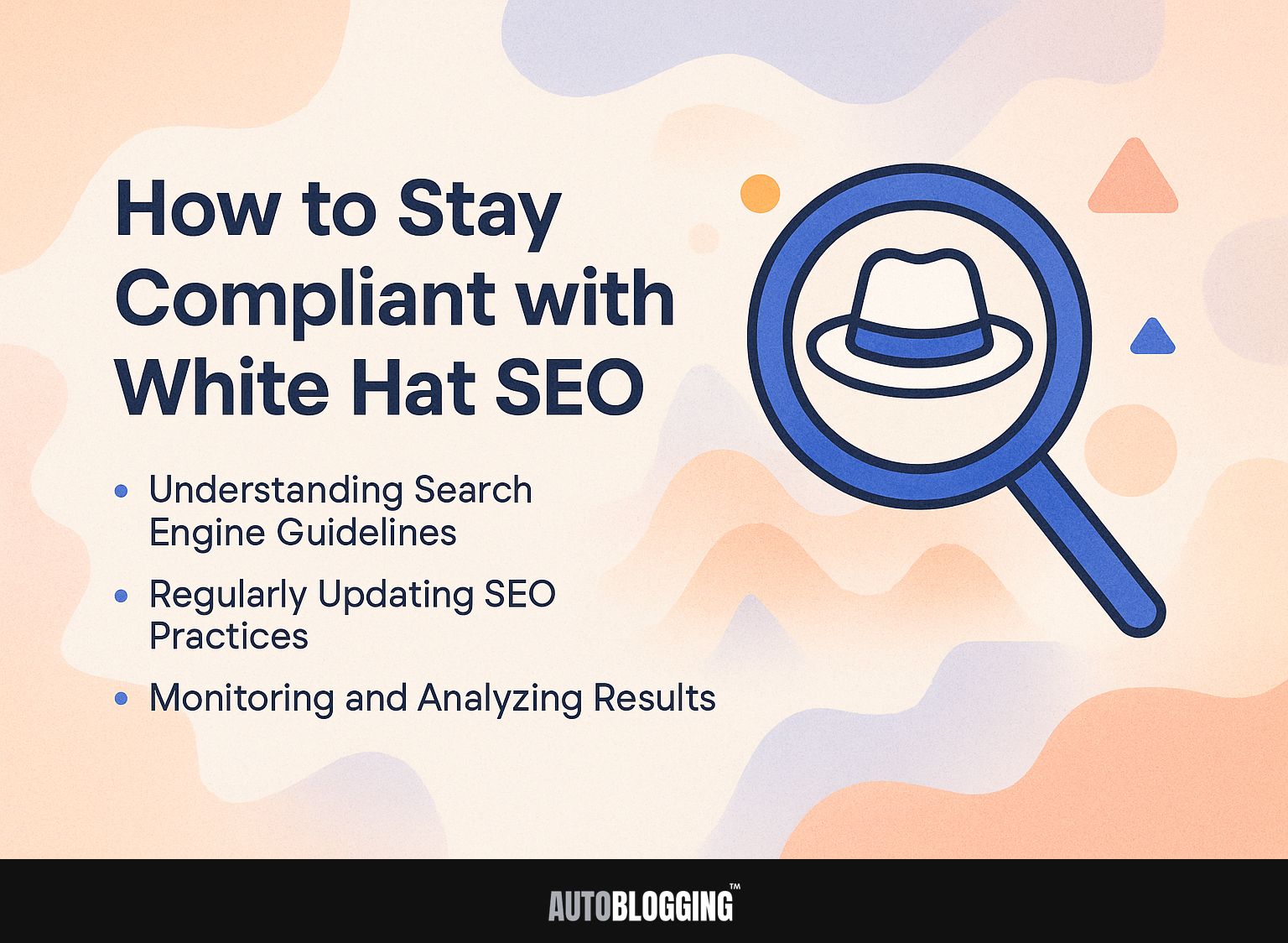
1. Understanding Search Engine Guidelines
Familiarizing yourself with Google’s guidelines, available through the Search Quality Evaluator Guidelines, is essential for effective White Hat SEO.
To access these guidelines, visit Google’s Search Central website and download the PDF. Focus on parts that talk about the quality of content, the experience of users, and why having skill, authority, and trust is important (E-A-T).
Regularly checking these guidelines helps keep your SEO practices up-to-date, so you can keep good rankings and avoid penalties. For example, assessing your content against these principles can reveal areas for improvement, such as enhancing your site’s loading speed or ensuring your articles are well-researched and informative.
2. Regularly Updating SEO Practices
Regularly refreshing SEO strategies is important; businesses should read SEO blogs like Moz and Search Engine Journal to stay aware of algorithm updates.
By signing up for newsletters from Neil Patel and Ahrefs, you can get useful advice and information sent straight to your email.
Participating in online groups like the SEO subreddit or Moz Community helps you connect with other professionals dealing with similar issues.
Joining webinars or conferences like SMX or Pubcon can help you learn about new strategies and tools.
By using these methods together, businesses will handle the often unpredictable world of SEO more effectively, ensuring they stay ahead.
3. Monitoring and Analyzing Results
Utilizing analytics tools such as Google Analytics and Ahrefs helps in monitoring SEO results and analyzing website performance effectively.
- Start by setting up Google Analytics to track essential metrics like traffic sources, user behavior, and bounce rate.
- Pay attention to the number of sessions and page views; this data reveals user engagement trends. Simultaneously, use Ahrefs to evaluate your backlink profile and keyword rankings.
- Change your content plans by looking at data like pages with high bounce rates-these might need improvement.
- Review this data regularly, ideally monthly, to keep refining your strategy and increase the website’s performance.
Common Misconceptions about White Hat SEO
Many wrong ideas about White Hat SEO can confuse businesses and reduce the success of honest marketing methods online.
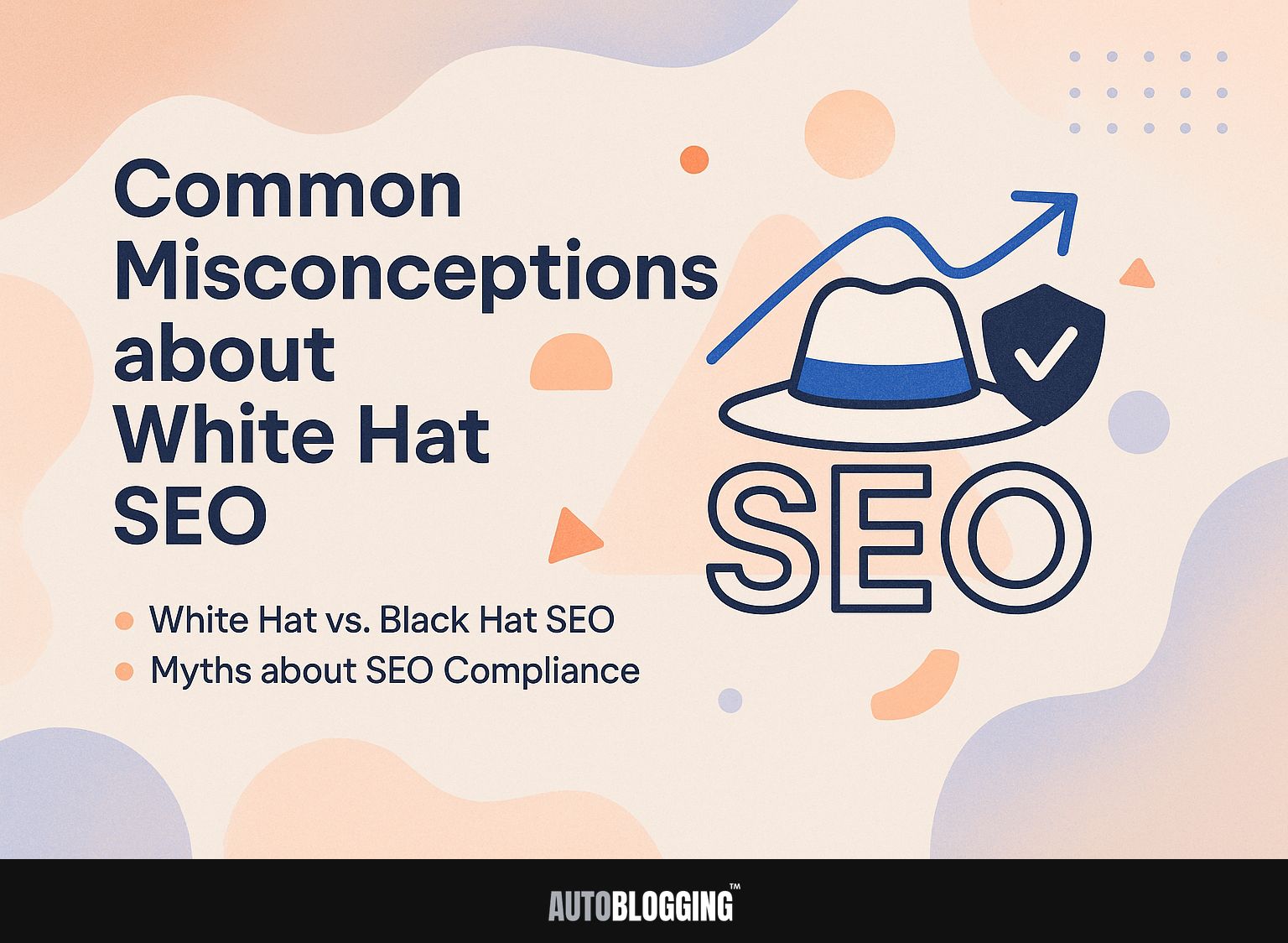
1. White Hat vs. Black Hat SEO
White Hat and Black Hat SEO have very different approaches. White Hat prioritizes quality and following rules, whereas Black Hat aims for fast, risky rewards.
White Hat techniques include creating high-quality content, enhancing how users interact with a site, and building backlinks through genuine connections. A business might create useful guides or case studies that naturally draw links.
In contrast, Black Hat methods like excessive keyword stuffing or generating fake backlinks promise faster results but often lead to significant penalties. Websites employing these tactics risk penalties, such as being de-indexed by Google, impacting traffic and revenue.
For instance, Overstock.com faced a penalty for unnatural links, illustrating the risks of unethical practices.
2. Myths about SEO Compliance
Common myths about SEO compliance often lead businesses to misunderstand the implications of their optimization efforts, potentially harming their strategies.
One prevalent myth is that more keywords always lead to better rankings. In reality, keyword stuffing can result in penalties from search engines.
Another misconception is that SEO is a one-time task; it actually requires ongoing efforts and adjustments as search algorithms evolve.
Some think backlinks are the main factor for ranking, but user interaction and content quality are just as important.
To address these myths, frequently review your SEO methods, use tools like Google Analytics to monitor performance, and keep informed about industry changes through reliable sources.
Challenges in Implementing White Hat SEO
Using White Hat SEO can be tough and limit success, especially for small companies trying to compete in crowded markets.
1. Time Investment
Putting effort into White Hat SEO is worthwhile, though companies may need to spend as much as 15 hours each week on tasks to keep strategies working well.
- To maximize efficiency, prioritize your tasks by focusing on high-impact areas like keyword research, content creation, and link building.
- Use tools such as Ahrefs or SEMrush for keyword analysis, which can save hours. Block out specific times weekly-like Monday mornings for audits and Thursday afternoons for content updates.
- Think about using a content calendar to organize your posting plan. This helps your website stay interesting and up-to-date without much repeated work.
- By managing your time well, you can improve your SEO plan without burdening your team.
2. Competition with Black Hat Techniques
Competing against sites employing Black Hat techniques can be frustrating, as these strategies often yield quick results that undermine White Hat efforts.
To distinguish your site, focus on building quality content that serves user intent. Use original research, case studies, or expert knowledge that others can’t easily copy.
Use SEO tools such as Ahrefs to track keywords and analyze data, which can improve your content plan. Build connections in your field by writing guest blogs and working with others-this increases your credibility and naturally creates backlinks.
It’s important to post regularly to increase your audience and show your dedication to fair practices, which will improve your SEO ranking.
3. Summary of White Hat SEO Importance
White Hat SEO practices are important for ethical digital marketing, meeting search engine guidelines and keeping users happy.
Employing techniques such as quality content creation, keyword research, and proper backlinking, White Hat SEO builds credibility over time.
For example, frequently sharing helpful blog posts increases your site’s trustworthiness and brings in more visitors.
Tools like SEMrush or Ahrefs can help find important keywords while Google Search Console helps track how your site is doing. Getting links from trusted websites can greatly improve your rankings.
Keep in mind, our work emphasizes user satisfaction, which helps achieve long-term success while avoiding issues with search engines.
Frequently Asked Questions
1. What is White Hat SEO?
White Hat SEO is a set of ethical techniques used to improve a website’s ranking in search engine results. It focuses on creating high quality content and following search engine guidelines, rather than using deceptive tactics to gain higher rankings.
2. What are some techniques used in White Hat SEO?
Some common techniques used in White Hat SEO include researching keywords, creating good content, improving website structure and menus, and building backlinks in honest ways.
3. What are the benefits of using White Hat SEO?
The advantages of using White Hat SEO include better positions in search results, more natural visitors to your website, greater reliability and confidence from your audience, and lasting effectiveness as search engines update their rules.
4. How can I stay compliant with White Hat SEO?
To follow White Hat SEO, adhere to search engine rules and make content that is useful and appropriate for your readers. Don’t use misleading or spam tactics, and check and refresh your website often to keep up with SEO standards.
5. What are some potential consequences of using Black Hat SEO techniques?
Using Black Hat SEO techniques can result in penalties from search engines such as being removed from search results or having a lower ranking. Using unethical methods can harm how people view your website and erode trust with your visitors if they find out.
6. Can I use a combination of White Hat and Black Hat SEO techniques?
Mixing ethical and unethical SEO methods can lead to search engine penalties and damage your website’s reputation. It’s best to stick to ethical White Hat techniques for long-term success in SEO.
